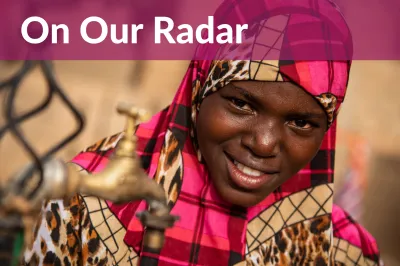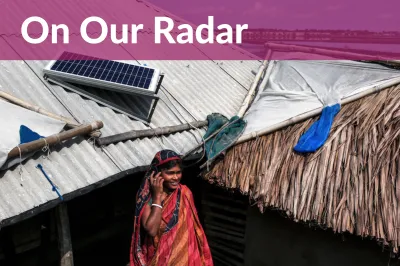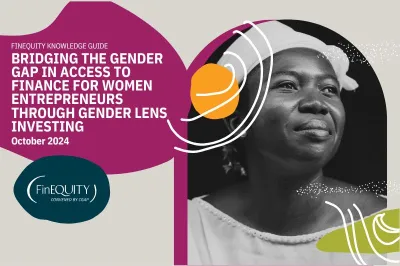Understanding How the Psychosocial Elements of Women's Groups Contribute to Building Resilience

Despite the mainstream inclusion of resilience in the international development and humanitarian assistance sectors, there is still much we do not understand about the linkages between psychosocial factors, like social capital, and women’s empowerment, and resilience. A new evidence review, jointly written by The Share Trust and Mercy Corps and published by the Resilience, Evaluation, Analysis and Learning (REAL) Award, synthesized what is known about the way psychosocial factors build resilience through the lens of self-help groups (SHGs), a type of women’s group. Previous programming and evaluation efforts focused on the more tangible aspects of resilience, such as material assets, livelihood strategies, and access to finance. A limited understanding of the key role that more subjective elements, and in particular psychosocial factors, can play in resilience investments is a notable evidence gap, particularly in contexts affected by fragility and conflict.
SHGs are mutual assistance organizations through which individuals undertake collective action to improve their own lives. They have been posited as a promising way to build the resilience of members and their households by facilitating substantial improvements in members’ psychosocial outcomes. Savings groups play the same role but differ in that they typically have a shorter-term focus on financial capacities, whereas SHGs place a long-term focus on collective action and psychosocial factors.
Grounded largely in the peer-reviewed literature from South Asia, the review indicates that SHGs, and women’s groups more broadly, could have substantial consequences for a range of women’s psychosocial factors and that these are critical sources of resilience. In combination with economic sources of resilience, such as access to loans and savings, psychosocial factors strengthened members’ and their households’ capacities to be more resilient in the face of shocks and stressors. In particular, the evidence suggests the following:
- Social capital: Women’s groups have been widely shown to expand women’s social networks and increase a shared sense of trust among women, generating solidarity among group members, as well as creating capacities and institutions for collective action.
- Women’s empowerment: Women’s groups have been widely shown to have a positive impact on women’s individual and collective empowerment. SHGs can have broader, community-level effects by encouraging women’s civic and political engagement as well as local collective action.
The review also identified the following combination of factors that appeared to be central to building SHGs’ members’ psychosocial factors and resilience: access to savings, loans, and linkages to financial institutions, technical training, support, and advice, as well as linkages to networks.
While the evidence review showcased women’s groups as a promising approach to building resilience, it also highlighted that much remains to be learned about women’s groups and how they can best facilitate resilience. The report pointed to a few outstanding areas of research: How can the intersection of psychosocial and economic factors be maximized within groups? How do women’s-only groups differ in their response to shocks as compared to mixed-gender groups and men-only groups? How can women’s groups facilitate resilience in fragile and conflict-affected contexts, and how does this vary in contexts with environmental and economic shocks?
Answers to these questions will be key for practitioners’, researchers’, and donors’ ability to strategically invest in better design and more rigorously evaluate women’s groups and their resilience-building. This report is likely to encourage more dialogue and research on the potential of women’s groups to build resilience and to improve welfare. It could also provide guidance on where we should turn next in terms of programming, research, and investments to better actualize their potential.
To find out more about this topic, please join FinEquity and the REAL Award for an interactive learning event on May 11, 2021. Register here.



Thank you for the very excellent analysis .... Apart from the economic significance, the psychological benefits rural women can get from self help groups such as V.S.L.As is critical. Our team witnessed this during various grass-root research of Self Help Groups .... But Kim Wilson has also nicely summarized this, as ...
'.... using an array of carrots and sticks, groups customize support to individual members. While at times gentle healers, saving groups can also be stern purveyors of tough love, wielding threats to shape up or ship out. ‘’Don’t accept the abuse of your spouse’’ and ‘’stop drinking’’ are commonly heard directives… [...Kim Wilson, Trift-led Development, in Candace Lelson (2013): Savings Groups at the Frontier, ]
But can institutions (e.g Financial Service Providers) do more to add value to this? For example, couldn't they design interventions on ''gender transform'' issues, like the pilots of Gender Dialogue (CARE), and Gender Action Learning Systems, GALS (Oxfam-Novib, IFAD)?
Regards, Getaneh
Leave a comment